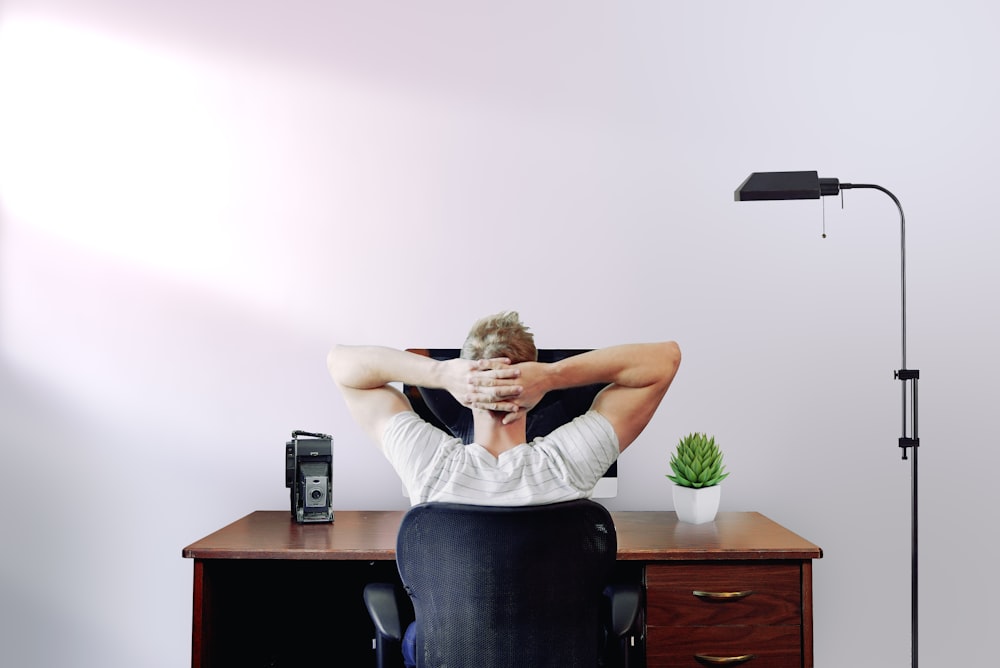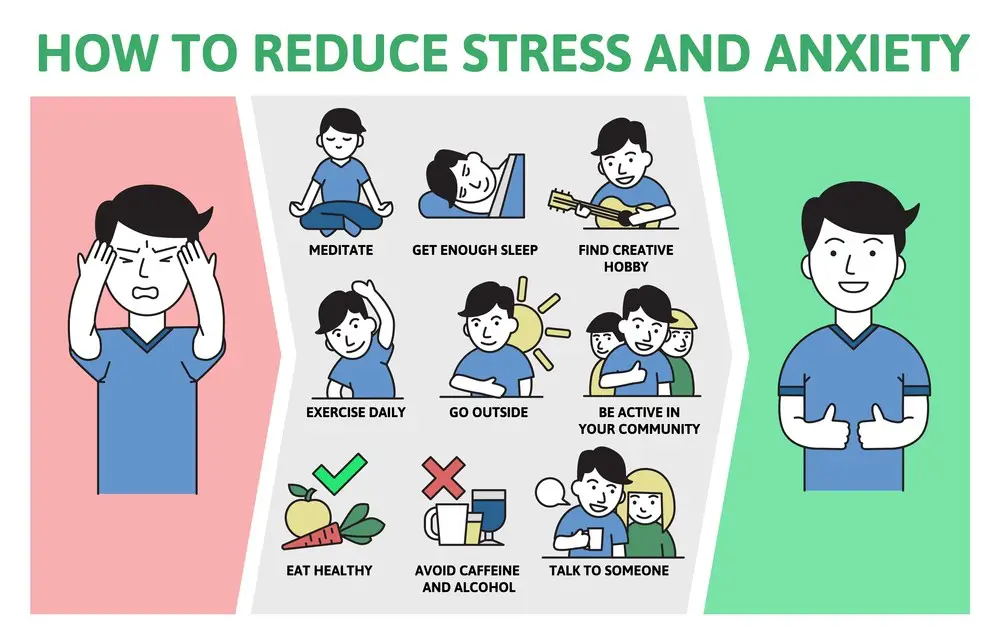As a BetterHelp affiliate, we receive compensation from BetterHelp if you purchase products or services through the links provided
The eye stye, dreaded though it may be, is not invincible. It may arrive uninvited, usually at the worst possible time, but we must face it head-on. It’s like a cherry on top but neither sweet nor welcome. We cannot underestimate the magnitude of this little red bump; it’s a volcano on the landscape of our eyelid that throbs with every blink. We must not let it mock us in the mirror, reminding us of the chaos that might be brewing in our lives. We must take control and tackle it with all our might.
A stye is more than just an eye sore; it could be a spyglass into our emotional well-being. We’ve all heard the whispers – stress is the body’s arch-nemesis. It’s like a puppeteer pulling strings that could wreak havoc in the serene world within.
- The Sneaky Pathways of Stress: Our journey begins with stress, that silent invader that tiptoes through our body, leaving a trail of mayhem. It knocks on the doors of our immune system, often leaving it in disarray.
- The Realm of Stye: Next stop, the realm of the stye. A dominion where bacteria are the uninvited guests at the banquet of our eye health. But what’s stress got to do with it? Let’s delve deeper.
- The Intersection: The road where stress and the eye sty cross paths is where the plot thickens. Is stress rolling out the red carpet for styes? Or is it just an old wives’ tale?
- Guarding the Fort: Lastly, we’ll wander into the gardens of prevention. How can tuning the strings of stress potentially halt the march of the menacing styes?
So, shall we venture together into this unfolding narrative? It’s about unmasking the connection between stress and stress and unearthing a holistic vision of well-being. The keys to the castle of prevention could well be nestled in the cradle of our emotional fortress.
 What Is Stress?
What Is Stress?
Stress arises from the body’s reaction to emotional or physical tension and pressure. It typically appears when we are in situations that we find overwhelming or difficult to manage. Insufficient sleep can also contribute to stress and affect eye health. Stress can be classified into two primary categories: acute and chronic. Acute stress is of brief duration and is typically caused by a specific event or circumstance. Chronic stress is of long-term duration and is usually the result of ongoing life events or situations.
Stress can manifest itself in physical and emotional symptoms, such as:
- headaches
- fatigue
- irritability
- difficulty concentrating
- difficulty sleeping
The Eyes and Stress
The eyes are complex organs, and their proper functioning relies on the delicate balance of various components, including the meibomian glands. These small sebaceous glands secrete an oily substance to coat the eye’s surface and maintain tear evaporation. Using old or expired cosmetics can clog these glands, increasing the risk of developing a stye.
Research has shown that stress can have a detrimental effect on eye health, such as causing:
- Dry eyes
- Double vision
- Eye strain
- Blurred vision
- Light sensitivity
Styes: Causes and Symptoms
A stye is a small, painful bump that appears on the eyelid and is caused by a bacterial infection, typically due to Staphylococcus bacteria. Symptoms of a stye include redness, swelling, and tenderness of the eyelid. Styes can be unsightly and uncomfortable, causing many people to search for ways to prevent their occurrence.
For a deeper understanding of the correlation between stress and stye, it’s pivotal to become familiar with the typical causes of stye and the factors that can lead to their development. In the following sections, we’ll explore the different types of stye, their causes, and how stress may play a role in their formation.
What Is a Stye?
Styes, also known as hordeolums, are a common occurrence on eyelids. They appear as red bumps caused by clogged oil-producing glands. They can be classified into two types: internal and external. Internal stye originates in an oil gland within the eyelid and may exert pressure on the eye as it grows. External styes are located on the exterior of the upper or lower eyelid, typically beginning in the root of an eyelash.
Common indications of an internal stye include:
- Pain and discomfort, particularly when blinking or closing the eye
- Redness and swelling around the affected area
- Sensitivity to light
- A small, red bump on the eyelid
Traditional Causes of Styes
A stye is typically caused by a bacterial infection of an oil-producing gland in the eyelid, usually due to Staphylococcus bacteria. Blepharitis, rosacea, or any other related condition may be associated with an increased risk of styes. Additionally, those who have had a stye in the past are more likely to experience it again. Using old or expired cosmetics can increase the risk of developing styes.
Typical methods of developing styes include scratching the eye, inadequate eye hygiene, and a compromised immune system. Insufficient sleep can also contribute to the development of styes. It is recommended to wash hands before touching eyes, use disinfected contact lenses, get adequate sleep, change pillow cover regularly, practice stress management techniques, avoid using outdated or expired cosmetics, refrain from sharing cosmetic products with others, and clean eye makeup before sleeping.
Strictly following the doctor’s guidelines can help control the condition. Adequate sleep is vital for stress management and eye health maintenance, which are part of good eye hygiene habits.
The Stress-Stye Connection
Research suggests that stress can increase the risk of infection, which may explain why stye is more prevalent under stress. Styes can be caused by stress, among other factors. Although stress is not a direct cause of styes, it’s possible that weakened immune systems and poor eye hygiene, which are often associated with stress, may contribute to the development of styes.
In the subsequent sections, we’ll delve into the effects of stress on stye formation and the role of effective stress management in preventing them.
How Stress May Contribute to Styes?
Stress can lead to excessive production of cortisol, thus diminishing the immune system’s effectiveness. Insufficient sleep can also contribute to stress and weaken the immune system. A weakened immune system may make the body susceptible to infections that cause styes. Stress can also result in suboptimal hygiene practices, including a lack of regular facial cleansing, potentially increasing the likelihood of developing styes. Using old or expired cosmetics can also contribute to the risk of developing a stye.
Research has indicated that stress can trigger the body to produce increased amounts of inflammatory chemicals, which can result in inflammation of the eyelids. Getting adequate sleep is critical to managing stress and preserving eye health. Inflammation can cause swelling and irritation of the eyelids, resulting in the formation of a stye.
 Managing Stress and Preventing Styes
Managing Stress and Preventing Styes
It’s beneficial to manage stress levels to lower the probability of a stye developing. This can be achieved by ensuring adequate sleep, engaging in regular physical activity, and utilizing relaxation techniques such as mindfulness or meditation. Additionally, it is advisable to clean all eye makeup before sleeping thoroughly, avoid using old or expired cosmetics, use contact lenses cautiously, and strive to maintain low-stress levels.
If a stye does develop, it is essential to start treatment immediately with warm compresses and gentle massage. If self-treatment fails to produce the desired results or the condition worsens, it is recommended that a doctor be consulted as a course of antibiotics may be necessary. An eye doctor can provide the appropriate treatment for a stye.
 Embarking on a Therapy Journey
Embarking on a Therapy Journey
Taking a step toward therapy is like opening a new door toward self-understanding and healing. It’s about dissecting the ties between the mind and the body and addressing the emotional currents contributing to physical discomforts like styes.
Signs Therapy is Needed
- Persistent Disquiet: Continuous feelings of anxiety, sadness, or emotional detachment may signal a deeper issue.
- Physical Manifestations: Recurrent physical ailments, like styes, could be your body’s way of spotlighting unaddressed stress or emotional turmoil.
- Turbulent Relationships: If interactions with loved ones or colleagues are persistently strained, it might be time to explore underlying issues with a therapist.
Setting Goals for Therapy
- Identifying Objectives: A clear set of goals can act as a roadmap for your therapeutic journey, whether managing stress, improving interpersonal relationships, or enhancing self-esteem.
- Customized Pathways: Every individual’s therapeutic goals are unique, and outlining yours will ensure a tailored approach to your sessions.
Acknowledging The Milestones: Recognizing Progress
- Small Victories Count: Progress may come as subtle shifts in your thought patterns, improved stress management, or fewer physical symptoms like styes.
- Reflective Insights: Regular reflection on your growth, even incremental, is pivotal. Celebrating small wins and recognizing behavioral shifts fosters continued progress and motivation.
By tuning into the whispers of both the mind and body, one can traverse the path of therapy with a clear vision. It’s about forging a connection between the seen and unseen and nurturing a holistic wellness that transcends the physical realm.
Conclusion
In conclusion, while stress may not directly cause styes, it can certainly play a role in their development by weakening the immune system, impacting eyelid hygiene, and contributing to inflammation. By effectively managing stress and practicing good eye hygiene, you can significantly reduce the risk of developing these painful and irritating bumps.
Remember, nurturing your emotional well-being is vital for your overall health and the health of your eyes.
- Left Arm Pain and Anxiety: Understanding the Relationship - November 23, 2023
- Anxiety Paralysis: Coping with Overwhelming Stress - November 23, 2023
- Anxious vs. Nervous: Differentiating Emotions and Responses - November 15, 2023
This site contains affiliate links to products. We will receive a commission for purchases made through these links.


 What Is Stress?
What Is Stress?

 Managing Stress and Preventing Styes
Managing Stress and Preventing Styes Embarking on a Therapy Journey
Embarking on a Therapy Journey
